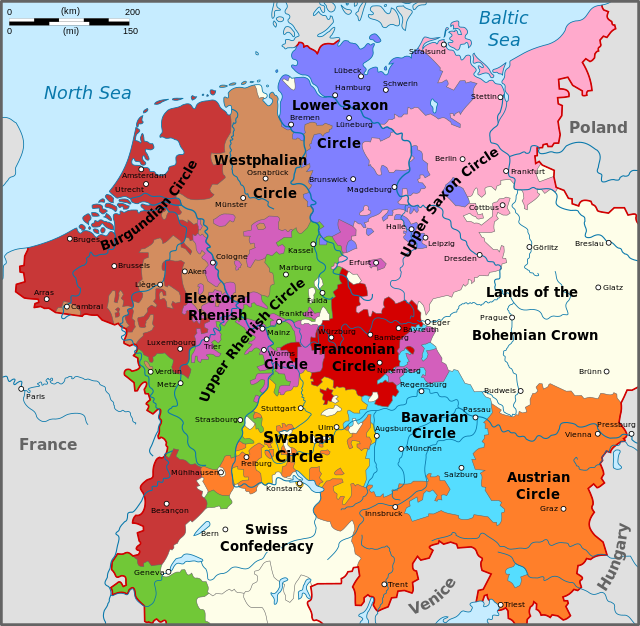Territories_of_the_Holy_Roman_Empire_outside_the_Imperial_Circles
When the Imperial Circles (Latin: Circuli imperii German: Reichskreise) — comprising a regional grouping of territories of the Holy Roman Empire — were created as part of the Imperial Reform at the 1500 Diet of Augsburg, many Imperial territories remained unencircled.

Initially six circles were established in order to secure and enforce the Public Peace (Landfrieden) declared by Emperor Maximilian I and the jurisdiction of the Reichskammergericht. They did not incorporate the territories of the Prince-electors and the Austrian homelands of the ruling House of Habsburg. Only at the 1512 Diet of Trier were these estates (except for the Kingdom of Bohemia) included in the newly implemented Burgundian, Austrian, Upper Saxon, and Electoral Rhenish circles, confirmed by the 1521 Diet of Worms.
After 1512, the bulk of the remaining territories not comprised by Imperial Circles were the lands of the Bohemian crown, the Old Swiss Confederacy and the Italian territories (the exceptions were Savoy, Piedmont, Nice, and Aosta, which were part of the Upper Rhenish Circle). Besides these, there were also a considerable number of minor territories which retained imperial immediacy, such as individual Imperial Villages (Reichsdörfer), and the lands held by individual Imperial Knights (Reichsritter).